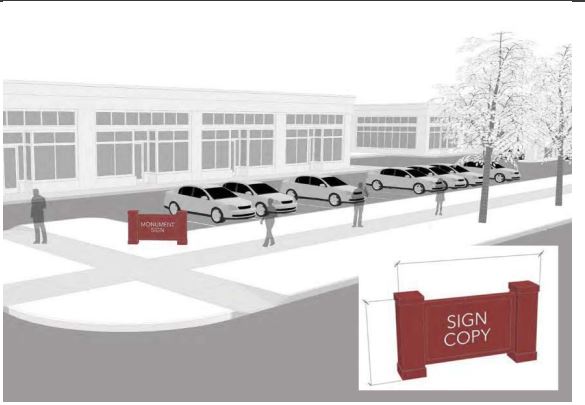LOWER MERION — Lower Merion officials are proposing a zoning change regulating large freestanding ground/monument signs that are often placed in front of multifamily apartment complexes.
Under the proposed zoning change, freestanding ground/monument signs will be limited to four feet for multifamily buildings and will permit a maximum sign area of 20 square feet.
Charlie Doyle, assistant director of building and planning for Lower Merion, described the proposal as a simple change in the code for the larger permanent monument-style signs, like those typically found in front of apartment buildings.
“It’s simply addressing signage that’s permanent. These freestanding monument signs are a little classier than most of your other signs, where it’s just a pole. These have a little more structure to them – A feeling of permanence, and what we’re doing is trying to put them within our MDR2 and MDR3 districts, and only on the properties that have more than six units,” Doyle said.
According to information provided in township documents for the meeting, Lower Merion’s MDR2 and MDR3 zoning districts “are designed to accommodate multifamily residential developments, including apartment buildings and condominium complexes.”
Doyle said a lot of these signs already exist in the township.
“Freestanding and monumental signs are essential for wayfinding, safety, and placemaking in these districts,” according to the staff memo to the commissioners. “Without clear and visible signage, residents, visitors, emergency responders, and delivery services may struggle to identify entrances or navigate to the correct location. This is particularly problematic in developments set back from the street or obscured by landscaping or topography.
“Updating the ordinance to include permit standards for freestanding and monument signs in MDR2 and MDR3 Districts will ensure consistency with the [t]ownship’s broader planning goals. It will also support design quality, neighborhood character, and equitable access by allowing appropriately scaled signage that enhances visibility without compromising aesthetics. Aligning these standards with those already in place for other districts will also streamline the permitting process and provide clarity for developers and property managers.”

